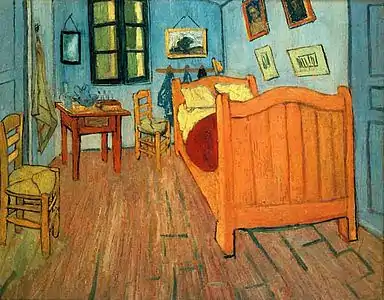Starving artist
A starving artist is an artist who sacrifices material well-being in order to focus on their artwork.[1] They typically live on minimum expenses, either for a lack of business or because all their disposable income goes toward art projects. Related terms include starving actor and starving musician.

.jpg.webp)
Some starving artists desire mainstream success but have difficulty due to high barriers to entry in fields such as the visual arts, the film industry, and theatre. These artists frequently take temporary positions such as waitering or other service industry jobs while they focus their attention on "breaking through" in their preferred field. The Starving Artists Project describes these artists as those who have not yet broken into their careers.
Other artists may find enough satisfaction in living as artists to choose voluntary poverty regardless of their prospects for future financial reward or broad recognition. Virginia Nicholson writes in Among the Bohemians: Experiments in Living 1900–1939:
Fifty years on we may judge that Dylan Thomas's poverty was noble, while Nina Hamnett's was senseless. But a minor artist with no money goes as hungry as a genius. What drove them to do it? I believe that such people were not only choosing art, they were choosing the life of the artist. Art offered them a different way of living, one that they believed more than compensated for the loss of comfort and respectability.[2]
Cultural depictions
The starving artist is a typical figure of Romanticism in the late 18th and early 19th centuries, seen in many paintings and works of literature. In 1851, Henri Murger wrote about four starving artists in Scènes de la Vie de Bohème, the basis for the operas La bohème by Puccini and Leoncavallo. In 1890, Knut Hamsun's novel Hunger depicted a period of a starving artist's life. In 1924, Franz Kafka wrote a short story called "A Hunger Artist" about a man who is world-famous for his public performances of fasting.
References
- Chohan, Usman W. Should artists pay their taxes in art? The Conversation July 16, 2016
- Virginia Nicholson, Among the Bohemians: Experiments in Living 1900–1939, (p. 2); Penguin, 2003.